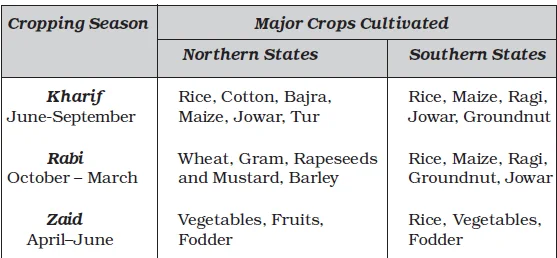![]() May 2, 2024
May 2, 2024
![]() 15677
15677
![]() 0
0
India grows various crops including food, fibre, vegetables, fruits, spices, and condiments. With three distinct cropping seasons (rabi, kharif, and zaid) the country cultivates a wide variety of crops ranging from grains to fruits and vegetables. From the winter-sown rabi crops like wheat and barley to the monsoon-dependent kharif crops like paddy and cotton, each season brings its own agricultural bounty, shaping the livelihoods of millions.

| Must Read | |
| Current Affairs | Editorial Analysis |
| Upsc Notes | Upsc Blogs |
| NCERT Notes | Free Main Answer Writing |
Conclusion
| Related Articles | |
| Crops: Production, Practices and Management | Natural Farming Needs Better Prices, Markets |
| Indian Wether Seasons | India’s Monsoon Climate |
<div class="new-fform">
</div>

Latest Comments